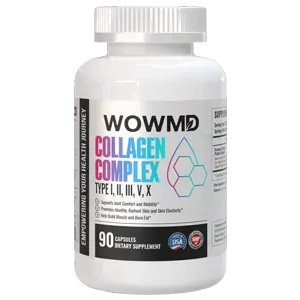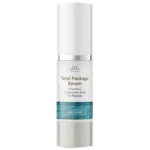We looked into Stem Cell Therapy on the basis of its ingredients, customer reviews, and more. Does Stem Cell Therapy really work? Read the Stem Cell Therapy review here!
Overview
Stem Cell Therapy, a groundbreaking medical advancement, harnesses the innate regenerative potential of stem cells to address a wide range of medical conditions and injuries.
What is Stem Cell Therapy?
Stem Cell Therapy, also known as regenerative medicine, is a cutting-edge medical approach that employs stem cells to restore, replace, or rejuvenate damaged or diseased tissues within the body. Stem cells are unique due to their ability to transform into specialized cell types, facilitating healing and tissue regeneration.
How does Stem Cell Therapy work?
The mechanism behind Stem Cell Therapy is intricate and relies on the remarkable capabilities of stem cells. The process typically encompasses the following steps:
- Collection of stem cells: Stem cells can be sourced from various places, including bone marrow, adipose tissue (fat), or umbilical cord blood. The choice depends on the patient’s specific condition and needs.
- Isolation and processing: After harvesting, stem cells undergo isolation and meticulous preparation to ensure their purity and potency.
- Targeted delivery: The next step involves carefully administering the stem cells to the affected area. This can be done through injections or specialized techniques, depending on the condition being treated.
- Tissue regeneration: Once inside the target tissue, stem cells differentiate into the necessary cell types, kickstarting the healing and regeneration process.
Pros and Cons Of Stem Cell Therapy
Pros
- Wide applicability: Stem Cell Therapy shows promise in treating a diverse range of medical conditions, from orthopedic injuries to neurological disorders.
- Minimally invasive: Procedures are often minimally invasive, resulting in little to no scarring.
- Low risk of rejection: The use of autologous stem cells (harvested from the patient’s own body) reduces the risk of rejection or adverse reactions.
- Natural healing: Stem cells promote the body’s innate healing mechanisms, aiding in tissue repair and regeneration.
Cons
- Cost considerations: Stem Cell Therapy can be costly, and insurance coverage may vary depending on the condition and location.
- Specialized facilities: Access to specialized treatment centers and trained professionals may be limited in some areas.
- Condition-specific efficacy: Not all medical conditions respond equally well to stem cell treatment; outcomes can vary.
- Long-term effects: While generally safe, the long-term effects and safety of Stem Cell Therapy require ongoing research.
Side Effects of Stem Cell Therapy
Although Stem Cell Therapy is considered safe, potential side effects may include infection, localized pain at the injection site, or an immune response. Discuss these risks with your healthcare provider before proceeding with treatment.
Customer Reviews
My son received stem cell therapy for autism, and we’ve seen remarkable improvements in his communication and social skills. It’s been a blessing for our family.
~David
I underwent stem cell therapy for my joint pain, and it’s been life-changing. The pain has significantly decreased, and I can enjoy activities I once couldn’t. Highly recommend!
~SArah P
FAQs
Q: Is Stem Cell Therapy suitable for all medical conditions?
A: Stem Cell Therapy is most effective for certain degenerative diseases, injuries, and conditions. Consult with a medical professional to determine if it’s an appropriate treatment option for your specific condition.
Advertisement
*All individuals are unique. Your results can and will vary.
Q: Are there any age restrictions for undergoing Stem Cell Therapy?
A: While there are no strict age restrictions, Stem Cell Therapy may be more effective in younger individuals with better regenerative potential. However, individual assessments are crucial, so consult with a healthcare provider for personalized guidance.
Q: How long does it take to see results from Stem Cell Therapy?
A: The timeframe for noticeable results varies depending on the condition being treated. Some patients may experience improvements within weeks, while others may require several months of follow-up. Patience and consistent monitoring are key.
Q: Is Stem Cell Therapy covered by insurance?
A: Insurance coverage for Stem Cell Therapy can be limited and may depend on factors like the specific condition and the patient’s insurance plan. Contact your insurance provider to determine your coverage options.
Conclusion
Stem Cell Therapy represents an exciting frontier in modern medicine, offering the potential to transform the treatment landscape for numerous medical conditions. While it has its pros and cons, its capacity to harness the body’s innate healing abilities and facilitate tissue regeneration holds great promise. If you’re considering Stem Cell Therapy, it is crucial to consult with a qualified healthcare provider to explore its suitability for your unique medical needs and circumstances.













Editor Rating
Write a Review
Hints on how to write a helpful review
A great review should have the following qualities:
We have high level of professional editorial section with zero tolerance policy on fake reviews.
To maintain the genuineness of our brand, we ensure all customer reviews submitted to us are verified and confirmed before publishing. Though we might not be a 100% accurate, however, we try our best to ensure being next to best. For a thorough verification of submitted reviews, we spend close to 7 working days before allowing any customer review to be published since we also work on the earliest submissions first.